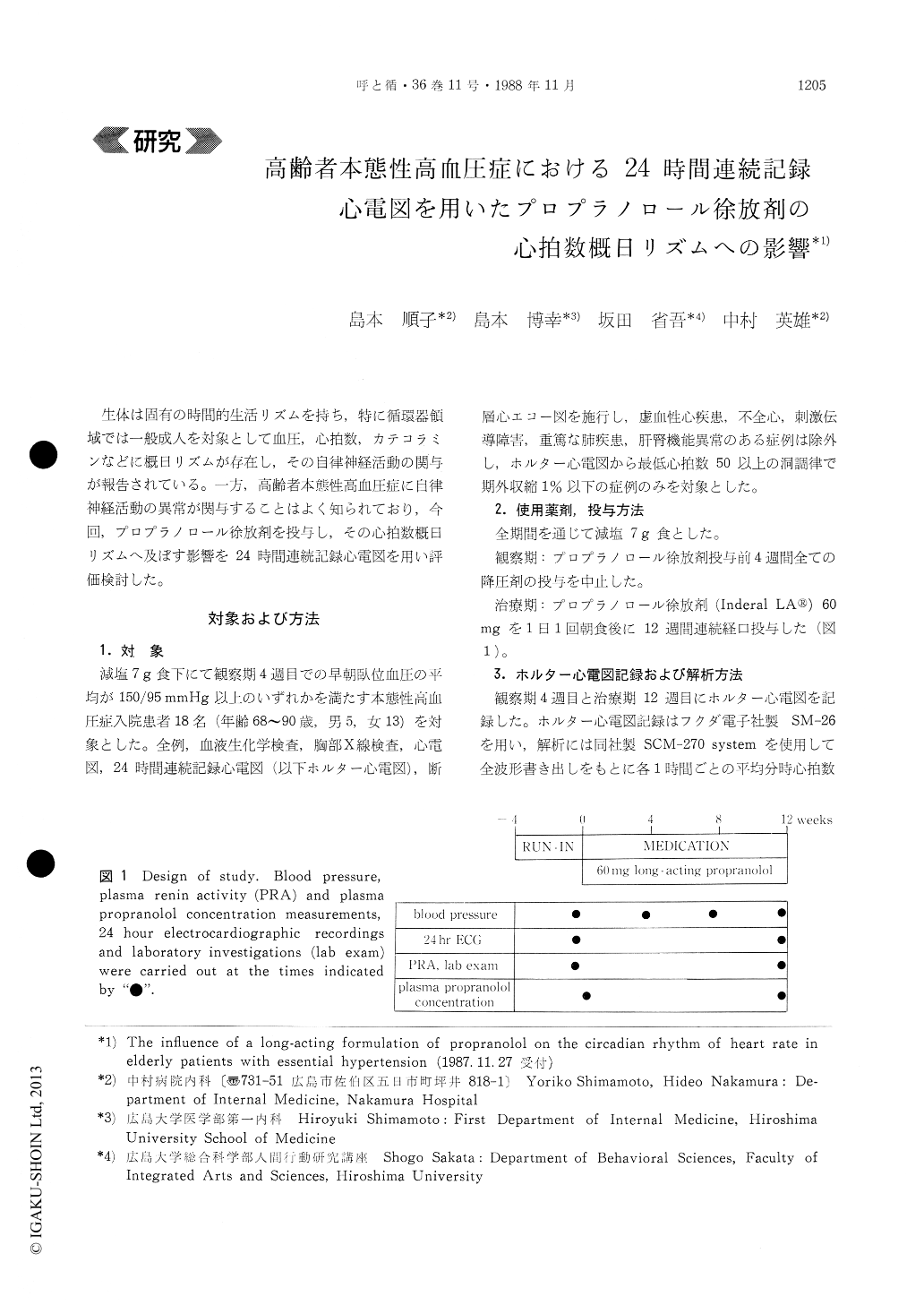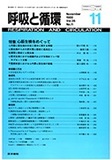Japanese
English
- 有料閲覧
- Abstract 文献概要
- 1ページ目 Look Inside
生体は固有の時間的生活リズムを持ち,特に循環器領域では一般成人を対象として血圧,心拍数,カテコラミンなどに概日リズムが存在し,その自律神経活動の関与が報告されている。一方,高齢者本態性高血圧症に自律神経活動の異常が関与することはよく知られており,今回,プロプラノロール徐放剤を投与し,その心拍数概日リズムへ及ぼす影響を24時間連続記録心電図を用い評価検討した。
The influence of a long-acting formulation of pro-pranolol on the circadian rhythm of heart rate was assessed using 24 hour electrocardiographic record-ings in elderly patients with essential hypertension. Eighteen aged patients (age 68~90 years, male 5, female 13) were investigated before treatment and after 12 weeks on 60 mg long-acting propranolol once a day. To determine if heart rate fluctuates rhythmically with a circadian period, mean hourly heart rate in 24 hour electrocardiographic recordings was used to fit cosine curves by the statistical tech-nique of least squares, and the following parameters were estimated ; mesor (rhythm-adjusted mean of heart rate), amplitude (one half of the total diurnal variation) and acrophase (time when heart rates reach their maximum on the average). 1) The cosine curves were fitted with a P value of 0.001 or lessbefore and after treatment in all patients. 2) The mesor and amplitude were reduced significantly after treatment. These findings suggest that the admini-stration of propranolol causes decreased sympathetic nervous activity during the day, while the nocturnal parasympathetic nervous activity is not affected by treatment. 3) The acrophase appeared significantly earlier after treatment than that before treatment. To investigate the factors influencing the phase shifting, patients were classified on the basis of plasma renin activity (PRA) before treatment into two groups. The phase in the low-renin group (PRA <0. 8 ng/ml/hr) was significantly larger than that in the high-renin group (PRA 0. 8 ng/m//hr). These results suggest that the sympathetic activity tends to increase early in the day in the high-renin group, while it tends to remain the same later in the day in the low-renin group. 4) The change in acrophase was significantly related to the peak plasma propranolol concentration after 12 weeks on 60 mg long-acting propranolol.

Copyright © 1988, Igaku-Shoin Ltd. All rights reserved.


